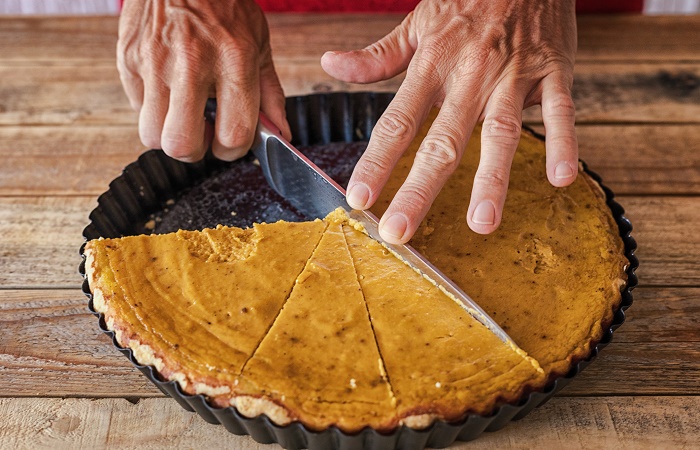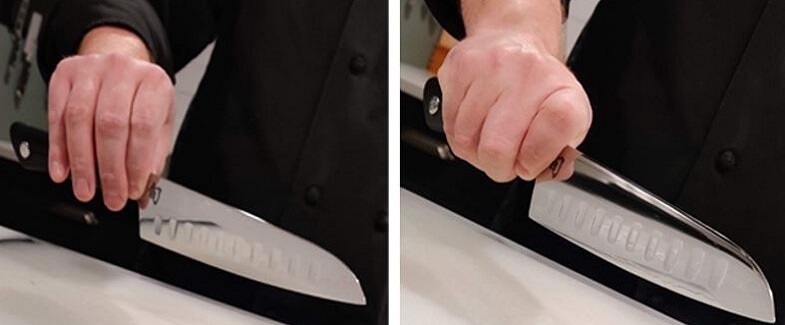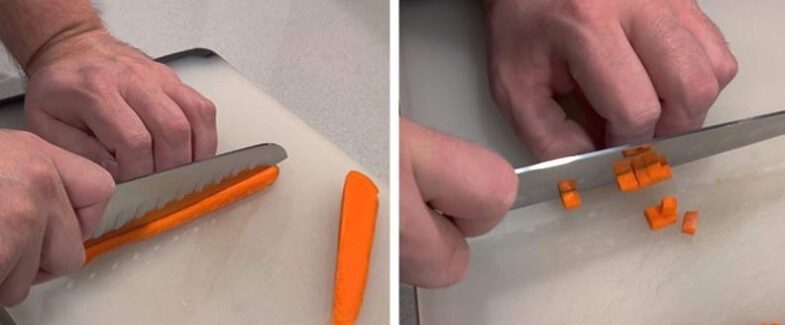Your Only Holiday Slice Should Be Pie
A few cutting board and knife tips can help keep holiday meals safe and happy.
A few cutting board and knife tips can help keep holiday meals safe and happy.

This season, many of us will be making a big meal (or two) for our loved ones. This should be a fun event — a celebration of food, friends and family. It would be a shame to interrupt the festivities with a trip to the emergency room, hand wrapped in a towel and needing stiches for a nasty cut.
Trust me, I know from experience. In addition to working on projects like Injury Facts for the National Safety Council, I’m also a culinary student. I’ve had my fair share of cuts, even with training and practice, and have helped other students as well (first aid training is a big plus here).
So, how do you use a knife properly? There’s no mystery, just some very basic concepts to understand. Since many are going to be reaching for a knife and cutting board in the coming weeks, here are some basic tips to help prevent injury.
Hold Your Knife Properly

For a larger blade, like a chef’s knife, the best way to avoid slipping is to pinch the spine of the knife between thumb and forefinger and then curl your fingers around the handle. It may feel strange at first (your first instinct might be to grip the knife handle like the handle of a hammer) but the “pinch” will give you extra stability.
Stay Sharp
A dull knife is a dangerous knife. If you have to apply extra pressure to cut through the food, there’s a greater likelihood the knife will slip. Sharpen knives regularly. Kitchen stores and farmer’s markets often offer this service, and you can also buy a stone or consumer knife sharpener. Keep in mind that a steel, the long saber-like metal rod that you run your knife up and down, is not a sharpener. It can only hone and smooth the edge of your knife.
Keep It Steady
Many cutting boards now come with rubber feet or grips to prevent slipping, but placing a damp dishtowel underneath the board can help. Your food should be stable, too. Round items like onions, potatoes and carrots will roll, so the first thing to do is square them by cutting off an end or side so that you have a flat surface. You’ll have a much easier time cutting it.
Tuck Your Fingers

With the knife in your dominant hand, your other hand will act as your guide, which is admittedly tricky. Keep your fingertips curled under, away from the blade, as you apply even pressure down and away from you. Your guide hand will control the size of the cut. It may seem scary, but the blade should slide against the flat of your fingers created by the curl. It will take practice; don’t rush and work up to it at your own pace.
If you’re nervous, consider investing in a cut glove, usually woven with materials like steel fibers or Kevlar, available online for a nominal cost. Remember that they are very good at preventing cuts from slicing, but they don’t really protect against piercing injuries.
Careful with Clean-Up
Would it surprise you that most of my students injured themselves cleaning their knife, as opposed to using it? Leaving a knife submerged in the sink — easy to do in the bustle of a holiday gathering — is almost guaranteed to cause injury. Keep all knives and blades separate from the other dishes and utensils and wash them individually.
The knife is the most common kitchen tool, and you probably use one almost every day. But don’t be lulled by familiarity. It’s when you’re not paying attention and rushing that injuries occur. Slow down, stay safe and enjoy the holidays, injury-free.
With a century-long legacy, the National Safety Council is a global center for safety expertise. Let's work together to align resources. We look forward to learning about ways we can join efforts to expand safety everywhere!
There are no items in your cart